The Circle Of Life – 10 Years Of Xbox 360
by Tim
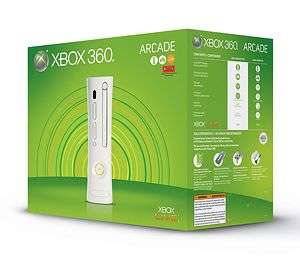 Ten years is a long time in the world of games; long enough for a console generation to come, go, and be consigned to sweet nostalgic memory, as well as the attic. Or, at least, it used to be. On November 22nd 2015, Microsoft’s second stab at a games console, the Xbox 360, turned a decade old, and while support has gradually been phased out over the last couple of years, as its successor the Xbox One has taken over, the age-old machine has largely remained relevant for most of its time. It’s an unprecedented lifespan for a games console, admittedly the state of the global economy during the 360’s reign no doubt factoring into the machine’s elongated existence just as much as the technological developments have, and with over 84 million consoles sold and nearly two thousand games released across physical and digital formats, the Xbox 360 has been an astonishing achievement for Microsoft’s gaming initiative.
Ten years is a long time in the world of games; long enough for a console generation to come, go, and be consigned to sweet nostalgic memory, as well as the attic. Or, at least, it used to be. On November 22nd 2015, Microsoft’s second stab at a games console, the Xbox 360, turned a decade old, and while support has gradually been phased out over the last couple of years, as its successor the Xbox One has taken over, the age-old machine has largely remained relevant for most of its time. It’s an unprecedented lifespan for a games console, admittedly the state of the global economy during the 360’s reign no doubt factoring into the machine’s elongated existence just as much as the technological developments have, and with over 84 million consoles sold and nearly two thousand games released across physical and digital formats, the Xbox 360 has been an astonishing achievement for Microsoft’s gaming initiative.
Sure, there have been a few ups and downs along the way, with Microsoft leaving a particularly sour taste in some players’ mouths during the console’s twilight years, but all in all the Xbox 360 is justifiably considered as one the most influential and pioneering games consoles of all time. It ushered in the HD era, and brought with it Achievements and Gamerscore; it set the standard for online gaming on console, and, d-pad aside, has arguably the best gamepad ever. So, at the risk of making some readers feel very, very old (sorry about that), lets travel back ten years to where it all began and retrace our steps back to today, with some of our own personal highlights and thoughts on the console along the way…
2005
Microsoft were the first of the three platform holders to unveil their contender in the next-gen race on May 12th, with a pre-E3 show fronted by Frodo Baggins on MTV. Revealing a sleeker and curvaceous console with a slimmed-down and redesigned controller to match, the officially titled Xbox 360 was a world apart from the big black box that was the original Xbox. Pumping out sumptuous HD graphics, packing 512MB of memory (gasp), and able to sit vertically or horizontally (double gasp), Microsoft not only fired the first legitimate shots of the console war but also dropped a massive bomb, announcing that the Xbox 360 would hit shelves in time for Christmas, giving them what would turn out to be a year’s head start over the competition.
Releasing on November 22nd in America, and arriving in other territories soon afterwards, the Xbox 360 came in two bundles at two price points: plump for the pricier premium pack and you got a wireless controller, component HD AV cable, headset, and detachable 20GB hard drive with your console, whereas the cheaper core pack substituted the wireless controller for a wired one, the HD AV cable for standard AV, and removed the hard drive from the console along the headset. One was always going to be more sought after than the other, of course, but it mattered little since Microsoft couldn’t manufacture enough units to meet demand, with only 300,000 consoles allocated for all of Europe.
At least the launch games were more widely available, for those lucky enough to actually get hold of a console, that is. Although Kameo: Elements Of Power and Perfect Dark Zero, a double helping from Rare, ultimately disappointed, Call Of Duty 2, Condemned: Criminal Origins, and Project Gotham Racing 3 are highly regarded as the best of the 360’s launch line-up, and all three are still good to boot up today. Meanwhile, a bunch of cross-generation games turned up for the party, including Gun, Need For Speed: Most Wanted, and Tony Hawk’s American Wasteland, meaning there was plenty for early adopters to get their teeth into before the second wave of 360 games were due to hit in the following year.
 2006
2006
Unfortunately, the 360’s first full year on the market was a slow one, with major releases few and far between during the first half. That’s not to say there weren’t any games at all, with prettier versions of cross-gen games like Hitman: Blood Money, and Tomb Raider: Legend bolstering the 360’s catalogue, and The Elder Scrolls IV: Oblivion, and Ghost Recon: Advanced Warfighter providing the fully fledged next-gen experiences players were craving (we don’t count Advanced Warfighter as a cross-gen game – YouTube it), as well as two of the console’s earliest greatest hits.
Things certainly picked up in the second half though, with more games such as Just Cause, Splinter Cell: Double Agent, and the token Call Of Duty, Need For Speed and Tony Hawk games straddling the generations (some of which were clearly never meant for the older machines, it seemed), while others like Dead Rising, Prey, Rainbow Six: Vegas, Saints Row, and Viva Piñata showed off what the 360 could do when games weren’t creatively shackled by the constraints of last-gen hardware. Dead Rising’s intimidatingly huge crowds of zombies could be bludgeoned, sliced or knocked over with anything that came to hand in its impeccably realised shopping mall setting; Team Rainbow brought an innovative cover system and addictive online play along to their Vegas jaunt; and Saints Row was glitch-ridden, riotous fun that beat Grand Theft Auto to the next-gen open-world punch.
“I got my Xbox 360 in 2006 (purely on the strength of a copy of a couple of Dead Rising screenshots) and still consider it to be pound-for-pound the best console ever. My favourite memory is the first time I played Ghost Recon: Advanced Warfighter online. I was playing the co-op mode with some people off of a games forum. I had no idea what I was doing and so they sent me off a sniper rifle. I had fun headshotting those AI bastards and made some friends that I still see (in real life) to this day. Can’t argue with that”. ~ Richie
And then there’s the small matter of Gears Of War. Epic Games’ Unreal Engine 3-powered blockbuster played as important a role in the 360’s success just as much as Halo did with the original Xbox, selling one million copies in its first two weeks (and going on to sell a total of three million in its first ten) to become the fastest-selling video game of the year. Not only that, it also dethroned Halo 2 as the most-played game on Xbox Live, and today is regarded as one of the defining games of its generation, featuring the engine, the cover system and the art style which would remain prevalent in countless other shooters for years to come.
“It was Christmas of 2006 when Lorna gave me my Xbox 360. I was late to the party with the original Xbox, and I wanted to get as much from it as possible before taking the plunge with the latest hardware. The mistake I made was opening LEGO Star Wars before anything else, and I really wasn’t that impressed by it. Sure, it looked better than the original Xbox, but nowhere near as good as I’d expected. Then, after a few hours of frustrated boredom, I slipped Oblivion into the tray. I’d already played Morrowind to death on the Xbox, so knew that I’d likely enjoy Oblivion, but I wasn’t prepared for how much of my time it would take up. Three complete playthroughs later, and one partial, I decided that I had to move on to another game before I sickened myself of it. When I think of the Xbox 360, however, my mind immediately flicks to Oblivion through the 32″ Toshiba CRT TV and squinting to make out the text in the inventory”. ~ Mark R
“One of my very early memories of the Xbox 360 was Oblivion. I’d watched Mark playing it on his new Xbox 360 and found myself considering what I would do differently, where I would go, what armour I would choose, and how I just wanted to slap Thoronir. When I finally got my own Xbox 360, Oblivion was the first game I got and I leapt into it heart and soul. It consumed me. Tucked up in a blanket at the end of my bed, with my eyes half-shut from fatigue, I would bounce around the Imperial City, working on my Acrobatics or Agility, or idle around soaking up the beautiful world and collecting weapons to store in Rosethorn Hall or Frostcrag Spire. Oblivion immersed me so deeply and is so bound into good memories that it still ranks among my most beloved 360 games”. ~ Lorna
“Up until the age of 21, I had been a Nintendo kid, pure and simple. I had hours of arguments with friends, all Sony fanboys, who told me how shit Nintendo were and how I was supporting a lesser product. I never wavered though – I believed Nintendo was the best I could have. That all changed on my 21st birthday when my friends and ex-girlfriend chipped together to purchase me a brand new Xbox 360, Guitar Hero, Gears of War, and Pro Evolution Soccer. They were all there when I opened it too. I was dumbstruck at the generosity but not as dumbstruck as I would be by the amount of life I got out of it. I held onto that console for nine years, got it repaired twice and it came with me to four different homes. It opened my eyes to a different world of gaming”. ~ Chris
2007
Gears remained at the top of the most played pile on Xbox Live for much of 2007 as well. Until Halo 3‘s arrival in September, that is. This was, after all, the game most players bought an Xbox 360 for in the first place, and after grossing $300 million in its first week, doubling 360 hardware sales in the process, and clocking up over 40 million hours of online play in seven days, it’s not hard to believe. This was to be the concluding act to the Master Chief’s story, which started way back in 2001’s Xbox launch title Halo: Combat Evolved, and was so highly anticipated that it was blamed for keeping people out of the cinema over its launch weekend.
“The Xbox is home to my favourite game series of all time – Halo. Others will tell you that it’s bland, boring and overrated, and the rational part of me might agree with some of that. However, for me, the Halo series was a major part of my childhood, a grand sci-fi adventure based in a universe where Humanity wasn’t the typical ultra-powerful force. But above all, it was a way of staying connected with friends. When Halo 3 released, I remember getting home from college, sitting in front of the big TV in my parents’ living room and being so excited that I was shaking. This was the end of the original trilogy, the end of a story I had been obsessed with for years of my life. When that music hit and the choir filled my living room, it was probably as close to a religious experience as I’ve ever had. An experience delivered on the Xbox 360, a console which, for me and many others, was the focal point for a generation’s worth of similar experiences”. ~ Mark
Bungie’s shooter no doubt played a part in the success of Crackdown earlier in the year too, the open-world action game from David Jones, creator of GTA, which cast players as a biologically enhanced Agent tasked with ridding the fictional Pacific City of its criminal overlords. Select copies of the game included access to the Halo 3 multiplayer beta, you see, meaning players who handed over their money got a superb sandbox game for free as a bonus. BioShock also made a bit of a splash in the summer, while BioWare kick-started their massive space opera trilogy (and sex simulator, according to FOX News) Mass Effect during the Christmas rush, both of which were Xbox 360 console exclusives at the time. This was also the year of Call Of Duty 4: Modern Warfare and the first Assassin’s Creed.
“I have always been a fan of Sci-Fi media, whether it be games, movies, books, or themed music. I love the fantasy mixed with semi-realism – the thought that all of this could one day be possible. I’ve played plenty of games that tick this box on the Xbox 360- Dead Space, Gears of War, Christ I even played the first four Halo games so I would be able to say they’re shit and not have people accuse me of not having done the research first. However, for me, one of the most beautifully crafted and well-rounded experiences was Mass Effect. I had no fucking idea what it was and only that it was an Xbox 360 exclusive. That Christmas in 2007 was one of the greatest, and I’ve purposefully not done a second run so that one day I can do it all again without it being fresh in my mind”. ~ Chris
 Also of note in 2007 was Microsoft’s loss of Bungie and Bizarre Creations as first-party studios, the former to become an independent company while the latter were bought by Activision for an ill-fated partnership, making October’s Project Gotham Racing 4 the studio’s last retail game to be published by Microsoft. On a happier note, the Xbox 360 received something of an upgrade with the introduction of the Xbox 360 Elite, a black console with a 120GB hard drive and an HDMI port. It was just as well too, because as of March both Nintendo’s Wii and Sony’s PlayStation 3 were available in all territories, and Microsoft, despite having gained a massive lead on their rivals and the PS3 being notoriously difficult to develop for (leading to most multiformat games performing noticeably better on 360), needed to make sure they stayed ahead of the curve.
Also of note in 2007 was Microsoft’s loss of Bungie and Bizarre Creations as first-party studios, the former to become an independent company while the latter were bought by Activision for an ill-fated partnership, making October’s Project Gotham Racing 4 the studio’s last retail game to be published by Microsoft. On a happier note, the Xbox 360 received something of an upgrade with the introduction of the Xbox 360 Elite, a black console with a 120GB hard drive and an HDMI port. It was just as well too, because as of March both Nintendo’s Wii and Sony’s PlayStation 3 were available in all territories, and Microsoft, despite having gained a massive lead on their rivals and the PS3 being notoriously difficult to develop for (leading to most multiformat games performing noticeably better on 360), needed to make sure they stayed ahead of the curve.
What’s more, Microsoft also announced they would be extending the warranty of every Xbox 360 console that displayed the dreaded Red Ring of Death from one year to three, vowing to repair all defective machines free of charge in a move said to have cost the company $1.15 billion, and declared that significant improvements had now been made to the console’s innards during the manufacturing process. Reports of consoles exhibiting the infamous three red lights had surfaced from day one, and had been something of a PR blunder for Microsoft, so kudos to them for holding their hands up and biting the bullet, even if some felt it was a little too late.
2008
The Xbox 360 had some big-name exclusives in 2008, such as Gears Of War 2, Fable II, and Banjo-Kazooie: Nuts & Bolts (as well as a few let-downs like Too Human), but it was the multiformat games which truly ruled the year, not least were GTA IV in April and Fallout 3 in October, both of which Microsoft had secured rights for their DLC to appear first on Xbox (which would come to fruition the next year). Elsewhere in 2008: Burnout Paradise alleviated the misery of the post-Christmas blues, Condemned 2 and Dead Space scared the pants off horror fans brave enough to play them, and screenshots belonging to a convincing-looking remake of GoldenEye 007, Rare’s classic N64 shooter, leaked onto the internet with a rumoured release for Xbox Live Arcade, but sadly never came to be due to licensing issues.
“I consider myself something of a gaming loner. I have always eschewed multiplayer and have preferred, instead, to remain on my own, tucked away, enjoying single-player titles or campaigns, resenting the gradual intrusion of multiplayer into almost everything. Except Burnout Paradise. The game itself is something of an aberration in my personal gaming history. I typically loathe car games. And multiplayer. Yet with this game, which encompasses both, I fell in love. Hard. It may have been years ago now, with many faces long-faded into the dusty annals of takedown pics, but we had good times. The GamingLives crew and others used to regularly hang out, typically on Sundays, and while away the hours in Paradise City, cruising around the airfield, bashing and crashing around the White Mountains, or mischief-making up around and in the quarry. Those days and evenings seemed to go on forever. It wasn’t just the game – it was the banter and the laughs and the camaraderie. It represented a good time in my life that I can look back fondly upon. And damn it was a good game”. ~ Lorna
“Weekends were mostly spent playing Burnout Paradise with friends and fellow GL writers. With lobbies of only eight players available, it was tough to squeeze everyone in and some evenings we had two separate games going. There was never any real gameplay to speak of; never any races or competitive matches. We’d mess around all over the place, going from the quarry to the airfield, turning barrel rolls and trying to outdo each other on flat-spins. Nine times out of ten, if you headed into a tunnelled ramp to pull off something impressive you’d crash out because Iain had been an arse and parked himself at the top of the ramp where nobody could see him, or if you jumped on to a hangar roof to spectate from afar you’d be nudged over the edge by Kat, sneaking up from behind. Invariably, you knew you were in trouble when you heard the ‘Dixie’ horn coming up behind you, and Lorna’s tiny little General Lee would destroy you moments later. At least it would give Kat a chance to finally catch up with everyone in her ridiculous pink slowmobile, Peggles”. ~ Mark R
Speaking of Xbox Live Arcade, the much-loved Summer of Arcade promotion debuted this year, bestowing us with downloadable gems Castle Crashers, Geometry Wars: Retro Evolved 2, and Jonathon Blow’s mind and time-bending puzzler Braid. And then, towards the end of the year, the Xbox 360 Dashboard received a major shakeup with the arrival of the New Xbox Experience (or NXE). Replacing the old “Blades” UI the console launched out of the box with in 2005, the NXE was designed to be an easy-to-use, uncluttered and crisp-looking interface styled after Windows Media Centre, and introduced new features like game installation, party chat, and Avatars – Microsoft’s answer to the Wii’s Miis, you could say. With the year’s best exclusives, DLC for the year’s biggest multiformat games coming first, and a winning overhaul of the Dashboard, 2008 was indisputably a strong third full year for the 360.
“When I have a gaming obsession, I tend to fall hard. One of the hardest times, by far, was with Mirror’s Edge. Having got the game in the same Christmas haul as Fallout 3, I soon shunned the Capital Wasteland in favour of the sleek, cool aesthetics and intriguing concept in Mirror’s Edge. From the moment I ran out across a rooftop and took that first huge leap, my heart soared, my breath actually caught, and I really did laugh out loud in surprise. I was hooked. Instantly. I loved everything about it, from the story, to the kick-arse heroine, to the blisteringly fast, enjoyable gameplay. But at the time, I was still caught up with maxing out games I enjoyed… and so I spent almost three months working on Mirror’s Edge – I couldn’t help it. Speedruns, time trials… learning, practising, honing routes and shortcuts, studying videos and ghosts, building up muscle memory, repeating segments of levels over and over, cursing stormdrains, rage-quitting Level 9′s server room so many times. It was frustrating and exhausting, angering and exhilarating. And then came peace. I still remember the evening I popped the final, nasty Achievement for 90 stars on time trials. Maxing Mirror’s Edge was – and still is – one of my proudest gaming achievements. It was a gem of a title and shame on EA for taking so damn long to follow it up”. ~ Lorna
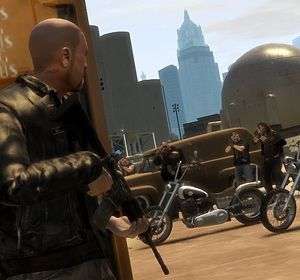 2009
2009
As promised, DLC for some of the previous year’s biggest games started to appear early in 2009, first on Xbox 360. GTA IV’s first add-on, a biker gang-focused story entitled The Lost And Damned, was perhaps the most well-known of the bunch, but downloadable packs for Fallout 3 and Tomb Raider: Underworld also made their way down the wire to Xbox players keen on extending their adventures. Meanwhile on the new releases front, Halo made the successful jump from FPS to RTS in Halo Wars, F.E.A.R. 2: Project Origin furthered the murderous exploits of troubled psychic Alma Wade, and Resident Evil made its first appearance on an Xbox console in the slightly disappointing fifth instalment of the once revered survival-horror franchise – there was also a limited edition red Xbox 360 console to commemorate the long-awaited game’s release.
Other than the odd respectable movie tie-in, though, it was something of a quiet start to the year in terms of major new games. But come E3 in June, Microsoft pulled out all the stops. MIA games Alan Wake and Splinter Cell: Conviction both made spectacular comebacks while Crackdown, Forza, and Left 4 Dead sequels along with Halo prequel Reach were revealed, Facebook and Twitter were due to come to Xbox Live, and Hideo Kojima was invited out on stage to announce Metal Gear Solid: Rising. Last but not least, there was the unveiling of Microsoft’s long-rumoured venture into the motion control market with Project Natal, which would later come to be called Kinect. Yes, these days the very mention of Kinect might be sneered at, and even during the reveal there was the “Bottom of an Avatar’s Shoe” meme courtesy of Kudo Tsunoda’s twisted on-screen representation, but at the time few could deny the concept, the promise, the potential, was impressive – a motion control device which put you at the centre of the action and made you the controller, removing the biggest barrier to entry for people who typically don’t play games. Understandably, questions and doubts were raised over pricing, technology and release, but in an E3 packed full of great-looking games from all parties, Microsoft delivered arguably the hottest topic of the show.
An even hotter topic was, of course, Modern Warfare 2, a game so rampantly hyped up by the press and from sheer weight of expectation it was sending practically every other high profile game due for release scurrying to the next year. To be fair, considering the Call Of Duty 4 follow-up would go on to become the biggest entertainment launch in history, few could blame publishers for getting cold feet. However, that’s not to say there was a total lack games to play during the last half of 2009 – far from it: Prototype, Red Faction: Guerrilla, and Battlefield 1943 meant there was actually something half decent to play over the summer months, Rocksteady redefined the superhero genre with the sublime Batman: Arkham Asylum, and Gearbox’s gun-obsessed, loot-driven co-op shooter Borderlands proved to be something of a dark horse. Concurrently over on Xbox 360, Summer of Arcade brought us Shadow Complex, ‘Splosion Man, and the unhealthily addictive Trials HD, GTA IV’s second and final expansion, The Ballad Of Gay Tony, proved to be the Liberty City saga’s finest hour, and in Halo 3: ODST, an experimental spin-off from the main series, Bungie produced what many consider to secretly be the best Halo game ever made.
“When Fallout 3 was released, everything else faded away. No other game mattered, as I was pulled into the Capital Wasteland and refused to leave, but it wasn’t until I finally gave in and started playing Borderlands that the social aspect of the Xbox 360 hit home with me. I may have had a headset on the whole time playing Burnout Paradise but, aside from a few “ooooh and that’s a bad miss” quotes thrown out here and there, I was mostly silent. Borderlands, however, was a more considered and tactical affair, and so there was a lot of discussion going on, but over time our sessions became more about the camaraderie than the gameplay itself. I’d meet up with Pete, and whomever else decided to join us for some ‘serious messing around’, and we’d chat for hours about this and that. It was at that point that the Xbox 360 evolved from being a mere games console to a full-on social hub. No friendships were built on the Xbox 360, but a lot were nurtured and reinforced, and I imagine my friendships would have been very different had I not been given an Xbox 360 that Christmas in 2006”. ~ Mark R
2010
Thanks in part to the Modern Warfare 2-induced influx of delays, there were just as many new games coming out in 2010’s opening months as there typically are in any other given year’s close. Kicking things off was Mass Effect 2, BioWare’s second and best instalment in the epic spacefaring trilogy, and an early shout out for Game of the Year too. From then on the big-name sequels just kept coming, with the underappreciated BioShock 2, ginormous Just Cause 2, and the multiplayer masterclass that is Battlefield: Bad Company 2, to name but a few, following soon afterwards, while Metro: 2033, a Perfect Dark HD remake, Splinter Cell: Conviction and, after a five year wait, Alan Wake gave the Xbox 360 roster a competitive edge. Plus, owners of Halo 3: ODST were granted access to the Halo: Reach multiplayer beta, in which over 2.7 million players racked up a total of 16 million hours of play.
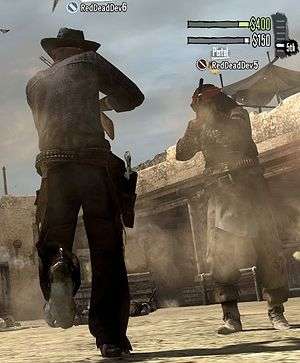 Topping things off for many, however, was Red Dead Redemption in May, Rockstar’s mesmerising open-world western and sequel to 2004’s somewhat forgotten Red Dead Revolver. Putting you in the ragged cowboy boots of reformed outlaw John Marston in the dying days of the Wild West, it sees you on a quest to track down his former gang members and bring them to justice at the behest of some shady government figures, who are holding his wife and son captive. More than the mere retread of GTA transplanted to the Wild West that many expected, Red Dead Redemption was entirely its own game, with its own sense of time and place, and its own set of rules and mechanics, showing off the developer’s RAGE engine at its very best (the guns in particular felt suitably deadly). It’s no wonder the game is still often cited as Rockstar’s greatest achievement to date, in both artistic and technical terms. Marston became an instant icon amongst gamers, the world he inhabits is depressingly bleak yet simultaneously beautiful, and the journey he embarks on is an emotionally charged narrative masterpiece, with a gut-punch of a finale. Where’s the sequel, Rockstar?
Topping things off for many, however, was Red Dead Redemption in May, Rockstar’s mesmerising open-world western and sequel to 2004’s somewhat forgotten Red Dead Revolver. Putting you in the ragged cowboy boots of reformed outlaw John Marston in the dying days of the Wild West, it sees you on a quest to track down his former gang members and bring them to justice at the behest of some shady government figures, who are holding his wife and son captive. More than the mere retread of GTA transplanted to the Wild West that many expected, Red Dead Redemption was entirely its own game, with its own sense of time and place, and its own set of rules and mechanics, showing off the developer’s RAGE engine at its very best (the guns in particular felt suitably deadly). It’s no wonder the game is still often cited as Rockstar’s greatest achievement to date, in both artistic and technical terms. Marston became an instant icon amongst gamers, the world he inhabits is depressingly bleak yet simultaneously beautiful, and the journey he embarks on is an emotionally charged narrative masterpiece, with a gut-punch of a finale. Where’s the sequel, Rockstar?
A month later at E3, Microsoft took the opportunity to fully lift the lid on Project Natal, now called Kinect, with the help of Cirque du Soleil in an extravagant reveal event. Unsurprisingly, there was a clear family-friendly slant to the selection of games on show, which hardcore gamers were less than thrilled with. Nevertheless, if Microsoft were to be believed, Kinect was going to get you fit, teach you to dance, and make you a Jedi. Closing out the show was the unveiling of the newly redesigned Xbox 360, a sleeker, slimmer and near-silent model with a 250GB hard drive and built-in Wi-Fi which was shipping to retailers on the same day for the same price as the existing versions, and those in attendance bagged one for free. The controller with the transforming d-pad also came out this year.
Keenly aware they ran the risk of alienating their fans with Kinect, though, Microsoft decided to announce a bunch of games aimed squarely at the hardcore in September at the Tokyo Game Show. Unfortunately, those games included Steel Battalion: Heavy Armour, Rise Of Nightmares, and Crimson Dragon (codenamed Project Draco at the time, which would eventually jump to Xbox One instead). Obviously, none were going to be ready in time to ship alongside Kinect itself in November, but that didn’t stop Microsoft treating it like a console launch or have a negative impact on sales, with eight million units sold in its first sixty days to claim the Guinness World Record of being the “fastest selling consumer electronics device”. Excluding Kinect Adventures, which came bundled in the box, Rare’s Kinect Sports was the top-selling game for the peripheral, followed by Kinect Joyride and Dance Central in second and third places respectively.
As for non-Kinect games, Halo: Reach was by far the killer exclusive in the Xbox 360’s 2010 line-up. Bungie’s Halo swansong set a new first-day sales record for the franchise by earning $200 million, and is a prequel to the original game set during the events of the novel Halo: The Fall Of Reach. It follows Noble Team, a six strong unit of Spartans, as they hopelessly attempt to defend the doomed planet from a Covenant invasion, and leads directly into the events of the very first game. Fable III, LIMBO, and Lara Croft And The Guardian Of Light also made waves on the 360 during this time, while multiformat hits like Call Of Duty: Black Ops, Fallout: New Vegas, and Need For Speed: Hot Pursuit rounded off an especially busy year in style.
2011
If 2010 was considered an eventful year for games, then 2011 was off the chart. Quite literally, a month didn’t pass without at least one major release: Dead Space 2, Bulletstorm, Crysis 2, Portal 2, L.A. Noire and, a game fourteen years in the making, but perhaps thirteen too late, Duke Nukem Forever all came out before the end of June, and that’s not even half the list. Christmas was even more extreme, with something new arriving in stores every single week for a certain period of time. Deus Ex: Human Revolution, Dark Souls, Batman: Arkham City, The Elder Scrolls V: Skyrim, Assassin’s Creed: Revelations, and Saints Row: The Third all made for a very expensive and time-consuming silly season. And who could forget the bitter mudslinging contest between Activision’s Modern Warfare 3 and EA’s Battlefield 3?
After Resident Evil 5 almost heartbreakingly failed to get the pulse racing, it fell to Dead Space 2 to deliver my next survival-horror fix. After all, developer Visceral had debatably already beaten Capcom at their own game with the “Resi 4 in space”2008 original, and while that first game was probably the better horror so to speak, the sequel was superior in every other way. Dead Space 2 managed to strike a tight balance between action and horror in a way that’s comparable to Shinji Mikami’s genre-defining masterpiece, and it felt oh so slick in the hands, too – one of those games where the controls just feel right. I loved it so much that I played it through no fewer than six times, back-to-back, earning the Hard to the Core Achievement on my fifth run, which requires you to beat the game on the hardest difficulty with a maximum of three saves. Luckily by this point, I was more than a little prepared for what lurked behind each and every darkened corner. Those Necromorphs didn’t stand a chance. ~ Tim
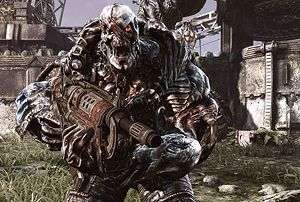 Three, it seemed, was the magic number, with a wealth of threequels gracing our TV screens this year. For many Xbox 360 owners, perhaps none were more anticipated than Gears Of War 3. After a highly successful and already super-polished multiplayer beta in April (when the game was originally slated for release), Epic’s trilogy closer raised the bar for cover-shooting when it shipped in Microsoft’s favoured September slot. True, it didn’t exactly advance the formula, but it damn near perfected it, and with a decent length four player co-op campaign, superb multiplayer options, and Horde 2.0, Gears 3 offered immense value for money.
Three, it seemed, was the magic number, with a wealth of threequels gracing our TV screens this year. For many Xbox 360 owners, perhaps none were more anticipated than Gears Of War 3. After a highly successful and already super-polished multiplayer beta in April (when the game was originally slated for release), Epic’s trilogy closer raised the bar for cover-shooting when it shipped in Microsoft’s favoured September slot. True, it didn’t exactly advance the formula, but it damn near perfected it, and with a decent length four player co-op campaign, superb multiplayer options, and Horde 2.0, Gears 3 offered immense value for money.
“I’ve never been much one for third person shooters, but I’ve always had something of a soft spot for Gears Of War. Plus, my dad really loves them, so when Gears Of War 3 came around I picked it up. I played plenty of Horde with my old man, but when the holidays came around we did something crazy. I brought my Xbox with me when I came home, roped in my terrible-at-games best friend and my amazing-at-games little brother, and the four of us played through the campaign on the hardest difficulty cooperatively. Yes, in one sitting. Yes, in the same building, but using the internet. It was one of the coolest things I’ve ever done with the Xbox, one of the most fun days that I’ve ever had, and showcased for me just how awesome Gears 3 can be”. ~ Keegan
Keeping petrolheads happy in the longer Autumn nights was Forza Motorsport 4, which left PlayStation’s Gran Turismo series trailing behind in the dust, and to celebrate ten years of Halo was Halo: Combat Evolved Anniversary, a remake of the original classic shooter which let you flit back and forth between older and remastered visuals at the press of a button. As for Kinect, Rez spiritual successor Child Of Eden and sequels to Dance Central and Kinect Sports showed the motion sensing device hadn’t entirely been forgotten about. Kinect was also at the heart of the new panel-based Xbox 360 Dashboard, keeping it in line with Microsoft’s Windows Phone interface, dubbed “Metro”. The only problem was, if you didn’t have Kinect, you’d find navigating the Dashboard with a controller a fiddly and often overcomplicated task. That, and all those pesky adverts making the place look untidy, meant “Metro” was met with decisively mixed feelings. On one hand, the Xbox 360 was doing more multimedia tasks than we’d ever imagined; on the other, most of those things didn’t necessarily feel in the best interests of gamers.
“With the Xbox 360 my favourite console, and having let PC gaming slip, I never considered that I would fall out of love with it. And yet I did. I don’t really consider that I fell, though, more that I was forced out of love. At first, there were the gradual intrusions of adverts, even for Gold members, and then the dash updates kept coming, the aesthetics changed, and soon it became clear that Microsoft’s focus was shifting. This fantastic gaming machine was altering before our eyes and becoming more of a media hub, with sports, Sky, and other clutter getting in the way. I hung on for as long as I could bear, but it became too much. When it finally felt that gaming had truly taken a backseat and the dash became more difficult to use for what I wanted, I made the heart-breaking decision to let go. It was still, for many years, the greatest console I owned. I still shake my head and wonder what the hell happened, even as I think back on all the great memories I created on that now-silent box in the corner”. ~ Lorna
2012
After the dust finally settled from possibly the busiest gaming year ever, internet buzz started to turn to the next generation. Titbits had been trickling out over the past twelve months already, but now rumours and speculation ran rife about what the next Xbox, evidently codenamed Durango, would be. Microsoft openly stated they weren’t showing any new hardware at E3 (and neither did Sony), but Watch Dogs, the cancelled Star Wars: 1313 and some lovely-looking next-gen engine tech demos gave us our first glimpses of what we could expect from the future consoles. Keeping with the Xbox 360, what Microsoft did show was SmartGlass, an app which turns Windows-powered smartphones into a second screen for specific games, able to display anything from stats to maps. Rather unsurprisingly, they also showed off a lot of Halo 4.
Halo 4 hailed the return of the Master Chief, and was the first core game not to be developed by series creator Bungie, instead being produced by 343 Industries, Microsoft’s handpicked team of developers assembled specifically to take over the Halo mantle. It picks up four years after Halo 3, the Legendary ending of which depicted the remnants of the Forward Unto Dawn, where the Chief resides, drifting towards an unknown distant planet. That planet turns out to be Requiem, a Forerunner shield world and home of the Prometheans which Master Chief crash-lands on after four years of cryonic bye-byes. But Halo 4 is very much Cortana’s story more than the Chief’s. Despite being a blue holographic AI construct, she is ironically the most human character of the entire series, which makes that ending all the more saddening. It’s also the best told story of the series, in spite of being rather lore heavy, and surpassed Halo: Reach’s day-one sales by $20 million, setting a new franchise record.
 Continuing the theme of new teams tackling established franchises was Forza Horizon, a more arcade-style racer focusing on the open road rather than the circuit races of Turn 10’s Motorsport series, and was developed primarily by British outfit Playground Games, who are made up of ex staffers from racing experts like Codemasters, Criterion, and Slightly Mad as well as the shuttered Bizarre Creations and Black Rock Studios. Horizon is an open world driving game complete with the physics of Forza 4, set in Colorado where the fictional Horizon Festival – a celebration of car culture and music – is taking place. To make way for such a vast and diverse open world, some elements of the Motorsport games naturally had to be pared back, but Horizon was nonetheless a terrific racing game which more than lived up to the heritage of the British racing development scene. With a team like Playground, though, it was always to be.
Continuing the theme of new teams tackling established franchises was Forza Horizon, a more arcade-style racer focusing on the open road rather than the circuit races of Turn 10’s Motorsport series, and was developed primarily by British outfit Playground Games, who are made up of ex staffers from racing experts like Codemasters, Criterion, and Slightly Mad as well as the shuttered Bizarre Creations and Black Rock Studios. Horizon is an open world driving game complete with the physics of Forza 4, set in Colorado where the fictional Horizon Festival – a celebration of car culture and music – is taking place. To make way for such a vast and diverse open world, some elements of the Motorsport games naturally had to be pared back, but Horizon was nonetheless a terrific racing game which more than lived up to the heritage of the British racing development scene. With a team like Playground, though, it was always to be.
Also on Xbox 360 this year: Geralt of Rivia made the jump from PC to console in The Witcher 2: Assassins Of Kings – Enhanced Edition, Alan Wake returned in downloadable episode American Nightmare, and Happy Wars became the first free-to-play game on Xbox. As for multiformat games, Mass Effect 3 caused controversy over its divisive ending, Agent 47 made his long awaited return in Hitman: Absolution, and Telltale put you through the wringer in their first episodic series of The Walking Dead.
2013
After the announcement of next-gen machines from Microsoft and Sony, focuses naturally shifted from the old to the new in 2013, with both the Xbox One and PlayStation 4 scheduled for a Christmas release. But before then, there was more than enough time for gaming icons Lara Croft, Sam Fisher and the Third Street Saints to reappear for one last hurrah on the soon-to-be-outdated 360. It was just as well too, because other than Gears Of War: Judgement, a prequel to the main trilogy starring Damon Baird in the lead role, there was a notable first-party gap in the console’s line-up. They do say, however, that a generation’s finest games come right at the end. BioShock Infinite and GTA V only reinforced that saying, arguably taking their places in history as two of the greatest games of all time.
Oddly, the Xbox 360 itself got its second redesign this year, in the form of the Xbox 360 E. Microsoft announced the console at E3, which intentionally resembles the look of the Xbox One, and revealed it was available to buy on the very same day. They also announced Games with Gold, a reward program which offers free (for want of a better word) games to Xbox Live Gold subscribers every month, no doubt to compete with Sony’s PlayStation Plus scheme. Unfortunately, most of the games Microsoft was serving up to begin with were early 360 titles most players had already beaten years ago. On an even sadder note, this was the last year for Summer of Arcade, and, excluding Brothers: A Tale Of Two Sons, was a disappointing send-off for a campaign which had brought us so many fantastic games in the past. It seemed Microsoft couldn’t get anything right, what with the calamitous reveal of the Xbox One turning a lot of long-term fans away and doing damage so severe some thought it to be irreversible. Things could only go up from here, though.
2014
The next generation may have been well underway by now, but there still remained a large and viable user base on 360 which publishers couldn’t ignore. Thus, as you’d expect, much like the first year of the 360’s life, there were plenty of cross-gen games coming out. Indeed, some did stay resolutely last-gen, such as Dark Souls II (although this would eventually come to next-gen a year later), Obsidian’s long-delayed South Park RPG The Stick Of Truth, and MercurySteam’s disappointing Castlevania: Lords Of Shadow 2, but most were spanning the console generations, like Wolfenstein: The New Order, Middle-Earth: Shadow Of Mordor, and Far Cry 4. Xbox exclusives TitanFall and Forza Horizon 2 also appeared in both last and next-gen guises, with development of the 360 versions handled by separate teams, the former by Bluepoint Games and the latter by Sumo Digital. But other than a handful of games from earlier in the year, there was very little, if anything at all, on 360 that didn’t appear on Xbox One as well. It seemed the days of the Xbox 360 were coming to a close.
 2015 – Present Day
2015 – Present Day
And so we return to today having come full circle. We’ve witnessed the birth of the HD generation, seen Xbox Live evolve into an all-encompassing social media hub, and been treated to an abundance of solid-gold gaming, unlocking more than 26 billion Achievements and earning a cumulative 472 billion Gamerscore in over 13 billion years’ worth of play. Despite not quite being the best-selling console of its generation, and Microsoft still not being able to crack Japan, the Xbox 360 has nevertheless been a phenomenon.
And it’s a phenomenon you can continue on Xbox One, thanks to the recently implemented backwards compatibility as part of the console’s New Xbox Experience update. Admittedly, it’s not backwards compatible across the board just yet, with only over a hundred games so far up and running, but it’s a step in the right direction, and another reason to seriously consider investing in Microsoft’s latest console. After a disastrous start to life, the Xbox One has moved from strength to strength. Ever since Phil Spencer took over from Don Mattrick and his punchable mug, policies have been revised, the price is right, and so far many of the exclusive games are a league above the PlayStation 4’s – Sunset Overdrive, Forza Horizon 2, and Halo 5: Guardians are arguably better games than The Order: 1886, Driveclub, and Killzone: Shadow Fall.
Will the Xbox One endure for ten years like the 360? Microsoft has always said it’s going to be a ten year lifespan for the console. Will the Xbox One be as fondly remembered as its predecessor? We’ll have to wait and see.
Last five articles by Tim
- Future Perfect
- A Thief's Alternative End
- Uncharted 4: A Thief’s End - Review
- Ratchet & Clank - Review
- Gears Of War 4 – Multiplayer Beta Impressions




















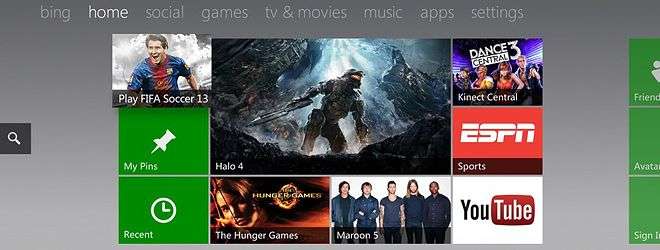






Cracking article Tim. What a lovely read.
Brilliant job mate
“Will the Xbox One be as fondly remembered as its predecessor?”
Will it fuck!
I loved the Xbox 360. More than any other console. Granted, I’d only ever owned two consoles before it (Coleco and original Xbox), but it was still an amazing machine, and made me a more active gamer than I was before. Actually, the Xbox in general is what turned me to RPGs from playing nothing but RTS games. I also never had any of my three Xbox 360s die on me, thankfully. I was so excited to hear what the new console would be like that it hit harder than I expected when it was just being touted as nothing but a voice-controlled media hub. I fell out of love with the idea right then and there, and when the PS4 came out I gave it a whirl. I loved it. I sold all my 360s and haven’t ever looked back, or even wished I’d held on to them.
It was a great machine, and I’ll never let Microsoft’s attitude towards their loyal fan base take that away from me, but I’ll never switch to Xbox One. As for the hanging question at the end… definitely not. Out of the forty or so gamers that I know, only a few even bothered buying an Xbox One, and out of those who did, only a couple actually play theirs while the others only bought it out of a sense of habit or brand loyalty. All of my 360-playing friends switched to PS4, and are very happy where they are.
I’d also strongly disagree about the exclusives being leagues above those on the PS4 – you cherry picked a select few to ignore those, such as inFamous: Second Son, which are leagues above most of the Xbox One exclusives. When you look at the Xbox One exclusives alongside those for the PS4 on the general release list, there are as many duffers and gems on each side.
Either way, I don’t miss my Xbox 360 at all, but I’ll never allow those fantastic memories to become overshadowed by the mess that Microsoft left in its wake when they announced the Xbox One.
It was an awesome article though, for sure. Enjoyed reading it, editing it, imaging it, and reading it again! I also enjoyed the journey.